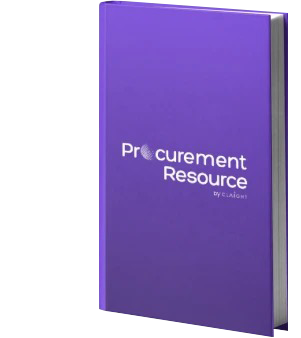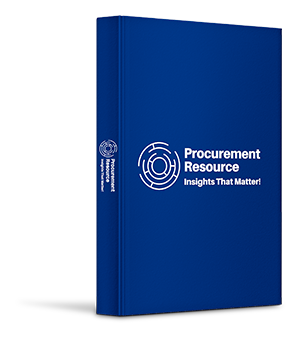Reports

Global Industrial Gases Market: Country Overview; Recent Events; Value Chain Analysis; Production Process; Cost Structure; Market Dynamics: Drivers & Constraints, Innovations & Trends, SWOT Analysis, Porter’s Five Forces; Industry Best Practices: Sourcing Strategy, Procurement Model, Contract Structure, Key Factors Influencing the Quotation; Key Supplier Analysis, 2024-2032
Industrial Gases Industry Report by Regional Category Spend, Price Analysis, Key Demand, Price Indicators, and Best Buying Practices
The global Industrial Gases market reached a value of about USD 85 billion in 2021. The industry is projected to grow at a CAGR of around 4% in the forecast period of 2022-2027 to reach a value of about USD 107.55 billion by 2027.
The global Industrial Gases industry report gives a comprehensive analysis of the industry, including key segments, trends, drivers, restraints, the competitive landscape, and other essential market aspects. The application of the gases in various industries is primarily driving the market. The United States is the highest category spender by region, driving the demand for the Industrial Gases industry.
Industry Definition and Segmentation
The gaseous composites produced for usage in the industry are identified as industrial gases. Nitrogen, oxygen, carbon dioxide, argon, hydrogen, helium, and acetylene are the most common gases accessible in gas cylinders, although many additional gases and mixes are also available. Elements, molecular compounds, and combinations make up industrial gases. The Industrial Gases industry report comprises segments by application (chemical and petrochemical, automobile, metal production and fabrication, healthcare and pharmaceuticals, food and beverages, and others) and region (Canada, the U.S., Brazil, South Africa, and Australia).
The United States is Driving the Growth of the Industry
The United States is the leading region in the industry owing to the region's expanding healthcare and electronic industries. Furthermore, market growth is expected to be fueled by extending the region's industrial sector.
The industry is being propelled by the extensive application of gases in many industries, including healthcare, food, and beverage. In the electronics sector, industrial gases, like nitrogen trifluoride, sulphur hexafluoride, silane, etc., are used to make flat panel displays, compound semiconductors, and sophisticated components like silicon wafers and integrated circuits propelling the industry. There is an ever-increasing need in the aerospace, metals, and mining sectors, where various industrial gases are employed on a massive scale. Hydrogen is utilised in transportation, whereas oxygen is used in gasification plants, hospitals, and steel mills. Liquid helium is also used to cool superconductive magnet coil scanners in magnetic resonance imaging (MRI) equipment, giving the industry a significant thrust. In the food and beverage business, industrial gases are employed for various purposes. Industrial gases are used in the food business for multiple purposes, including modified atmospheric packing (MAP), chilling and freezing, and managing product temperature during transit and storage, furthering the market's expansion.
Best Procurement Practices
The global Industrial Gases industry report by Procurement Resource gives an in-depth analysis of the best buying practices followed by major global Industrial Gases regions, such as engagement models, contract terms, and buyer and supplier negotiation levers, among others.
Category Management Studies
Air separation facilities purify air through a separation process, allowing for bulk production of nitrogen and argon, and oxygen – all three of which are frequently generated as cryogenic liquids. Natural gas, hydrogen, and helium may be liquefied using cryogenic technology. Cryogenic methods remove nitrogen from natural gas in a Nitrogen Rejection Unit in natural-gas processing. Reforming is the industry's other primary manufacturing technology. Steam reforming is a chemical process that converts natural gas and steam into syngas containing hydrogen, carbon monoxide, and carbon dioxide. The industrial gases industry's cornerstone technologies are air separation and hydrogen reforming, which are also necessary for fuel gasification (including IGCC), cogeneration, and Fischer-Tropsch gas to liquids schemes.
Growing Initiatives in the Sector, Further Augmenting the Procurement of Industrial Gases
The industry is being aided by the rising industrialisation and urbanisation, which further the use of the gases driving the market growth. The prominent corporations are spending on research and development (R&D) to create new and improved techniques for producing and distributing industrial gases worldwide. Moreover, various non-profit organisations provide firms with technical guidance on industrial gas production, transportation, storage, and consumption. They also encourage uniformity in the industrial gas business regarding safety, health, environmental, and technological requirements, which is likely to impact the market positively.
Despite this, the strict rules and regulations governing the manufacture, storage, and distribution of industrial gases paired with the high expense of storing industrial gases are likely to hamper the industry's expansion.
The regional markets for the industry can be divided into Canada, the U.S., Brazil, South Africa, and Australia.
Key Industry Players Mentioned in the Industrial Gases Industry Report
- Linde Plc
- Air Liquide
- Air Products
- Messer Group
- Nippon Sanso Holding
Market Landscape
The presence of numerous well-established players that control the majority of shares in various sectors of the industrial gas value chain and have multiple channels for manufacturing and distribution of their finished products globally is responsible for the competitive nature of the global market. Price, brand image, quality, technology, and distribution network are all competing considerations among industry competitors. To attain economies of scale, local businesses sell to multinational corporations in addition to their domestic sales. Due to many players on the market, fierce competition has developed. The only tactics organisations can use to remain in this highly competitive global market are new and multifunctional product creation, excellent quality, and fair pricing.
Key Initiatives by Companies
- Air Products Inc. opened a new cryogenic nitrogen factory in Bayan Lepas, Malaysia, in February 2021, which might help the firm grow even more.
- Linde PLC declared in December 2020 that it would form an equal-share joint venture with Sahara International Petrochemical Company (Sipchem) to create production and delivery systems in Saudi Arabia to address the rising demand for industrial gases.
1. Executive Summary
2. Industrial Gases Market Snapshot
2.1. Industrial Gases Market Outlook
2.2. Industrial Gases Industry Analysis By Application
2.2.1. Chemical and Petrochemical
2.2.2. Automobile
2.2.3. Metal Production and Fabrication
2.2.4. Healthcare and Pharmaceuticals
2.2.5. Food & Beverage
2.2.6. Others
2.3. Country Overview
2.3.1. Canada
2.3.2. US
2.3.3. Brazil
2.3.4. South Africa
2.3.5. Australia
3. Impact of Recent Events
4. Industrial Gases Value Chain Analysis
5. Industrial Gases Production Process
6. Trade Analysis
7. Major Risk Factors in Sourcing
8. Industrial Gases Cost Structure
9. Industrial Gases Price Analysis
10. Key Demand Indicator Analysis
11. Key Price Indicator Analysis
12. Industrial Gases Market Dynamics
12.1. Drivers & Constraints
12.2. Industry Events
12.3. Innovations & Trends
12.4. Swot Analysis
12.5. Porter’s Five Forces
12.5.1. Buyer Power
12.5.2. Supplier Power
12.5.3. Threat of New Entrants
12.5.4. Threat of Substitutes
12.5.5. Industry Rivalry
13. Industry Best Practices
13.1. Sourcing Strategy
13.2. Procurement Model
13.3. Contract Structure
13.4. Negotiation Levers
13.5. Pricing Model
13.6. Key Factors Influencing the Quotation
14. Key Supplier Analysis
14.1. Linde Plc
14.2. Air Liquide S.A.
14.3. Air Products and Chemicals, Inc.
14.4. Messer Group GmbH
14.5. Nippon Sanso Holding Corporation
The global Industrial Gases market size was valued at USD 85 billion in 2021.
As per the application provided, the chemical, petrochemical, and automobile segments are anticipated to lead the market between the period 2022 – 2027.
The significant demand for the gases in significant industries, including healthcare, etc., is one of the essential drivers of the Industrial Gases market growth.
Linde Plc, Air Liquide, Air Products, Messer Group, and Nippon Sanso Holding are some of the leading companies in the market.
The United States region of the Industrial Gases industry holds a significant share in the market.
The global Industrial Gases market attained a value of USD 85 billion in 2021, driven by the extensive application of gases in a wide range of industries, including healthcare, food, and beverage, which is driving the market's growth. Aided by the prominent corporations are spending on research and development (R&D) to create new and improved methods for producing and distributing industrial gases all over the world; the market is expected to witness further growth in the forecast period of 2022-2027, growing at a CAGR of 4%. The market is projected to reach USD 107.55 billion by 2027. Some of the leading players in the industry are Linde Plc, Air Liquide, Air Products, Messer Group, and Nippon Sanso Holding.
Procurement Resources' detailed research approach explores deep into the industry, encompassing the macro and micro aspects of the industry. Its team of experts uses a combination of cutting-edge analytical tools and their expertise, thus, delivering its customers with market insights that are accurate and actionable and help them remain ahead of their competition.
Compare & Choose the Right Report Version for You
RIGHT PEOPLE
At Procurement Resource our analysts are selected after they are assessed thoroughly on having required qualities so that they can work effectively and productively and are able to execute projects based on the expectations shared by our clients. Our team is hence, technically exceptional, strategic, pragmatic, well experienced and competent.
RIGHT METHODOLOGY
We understand the cruciality of high-quality assessments that are important for our clients to take timely decisions and plan strategically. We have been continuously upgrading our tools and resources over the past years to become useful partners for our clientele. Our research methods are supported by most recent technology, our trusted and verified databases that are modified as per the needs help us serve our clients effectively every time and puts them ahead of their competitors.
RIGHT PRICE
Our team provides a detailed, high quality and deeply researched evaluations in competitive prices, that are unmatchable, and demonstrates our understanding of our client’s resource composition. These reports support our clientele make important procurement and supply chains choices that further helps them to place themselves ahead of their counterparts. We also offer attractive discounts or rebates on our forth coming reports.
RIGHT SUPPORT
Our vision is to enable our clients with superior quality market assessment and actionable evaluations to assist them with taking timely and right decisions. We are always ready to deliver our clients with maximum results by delivering them with customised suggestions to meet their exact needs within the specified timeline and help them understand the market dynamics in a better way.

Global HEOR Service Market: Size, Trend, Analysis and Forecast 2024-2032
The global HEOR market reached a value of about USD 1364.3 million in 2021. The industry is further expected to grow at a CAGR of about 12.81% in the forecast period of 2022-2027 to reach a value of around USD 2779.2 million by 2027.

Global Artificial Intelligence Market: Size, Trend, Analysis and Forecast 2024-2032
The global Artificial Intelligence Market reached a value of about USD 192 Billion in 2021. The industry is projected to grow at a CAGR of around 23% in the forecast period of 2022-2027 to reach a value of about USD 664.86 Billion by 2027.

Global Nutmeg Market: Size, Trend, Analysis and Forecast 2024-2032
The global nutmeg market reached a value of about 134 thousand tonnes in 2021. The industry is further expected to grow at a CAGR of about 4.5% in the forecast period of 2022-2027 to reach a value of around 167 thousand tonnes by 2027.
